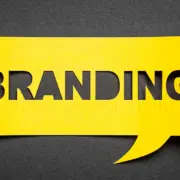Humor in Pandemic Marketing? Consumers Look for a Lighter Side
Nothing is funny about the pandemic. Numbers escalated, we stayed home. We all became employee/teacher/chef/sanitation engineers – simultaneously. Then glimmers of hope, small returns to normalcy before escalating numbers crept up again and have us planning for the “what ifs” of repeated stay-at-home orders, school closures, and additional hits to an already wounded economy. Yeah, nothing to laugh about here.
However, wading through the rivers of somber COVID-19 commercials has consumers weary. (Admit it, if you hear “we’re all in this together” or “these uncertain times” one more time, you’ll scream.) Advertisers are taking note and looking for ways to bring a lighter note to their messaging. However, walking that line between bringing levity to a situation and being insensitive is precarious. Here are some points to consider based on consumer research:
Humor is a positive emotion, but it’s also subjective.
When people need a release, they often turn to humor. Adding humor sparks a complex network of positive emotions and makes your brand more relatable and personable. Humor makes difficult situations more bearable and brands can use it to show consumers, “yeah, we get it” in a way that’s empathetic without being depressing. That being said, humor is also subjective, so make sure it is not only sensitive to the current situation but also aligns with your target audience. This Farmers Insurance spot acknowledges we’re all got a lot of time on our hands.
Consumers are weary of all-COVID, all the time, but still need you to acknowledge the realities.
While injecting some humor is a nice antidote to the strictly sobering responses to COVID, you can’t completely ignore it. Ads may start to shift to lighter promotions, with tweaks to reinforce that your business is doing (more than) what’s necessary to prevent the spread and support the community through the pandemic. Remember the Budweiser “Whassup” commercials? Here’s their COVID-sensitive reboot.
Humor doesn’t always have to be “funny.”
Employing humor doesn’t have to mean cracking jokes. Humor is a way to connect us so it can be as subtle as a conversational tone, underscoring human connections, or a willingness to put shortcomings on center stage. It’s humorous because it is relatable, not because it’s wacky. Check out KFC’s humorous nod to attempting to make that finger-licking recipe during quarantine.
Hope is a powerful motivator.
Consumers are looking for imagery beyond empty school hallways, desolate streets, or closed storefronts. Instead, they want to be presented with a more hopeful view of life. Marketers should paint a picture of what consumers are craving post-isolation – which includes a laugh or two. That being said, settings like crowded house parties a la John Hughes are probably “out,” but a small group of friends outside could be “in.”
Get close to your consumers.
We mean that figuratively, of course. If we’ve learned anything from these uncertain times (sorry, I did it!), it’s that there is a level of unpredictability associated with how ANY message is received. The best bet for marketers is to get close to consumers – pay attention to how they react, what they are saying, and what they need in this moment and then be prepared to pivot quickly. Whether your current marketing is no laughing matter or you need an expert to help you gather insight from your customers, Chartwell Agency’s marketing team is ready.









